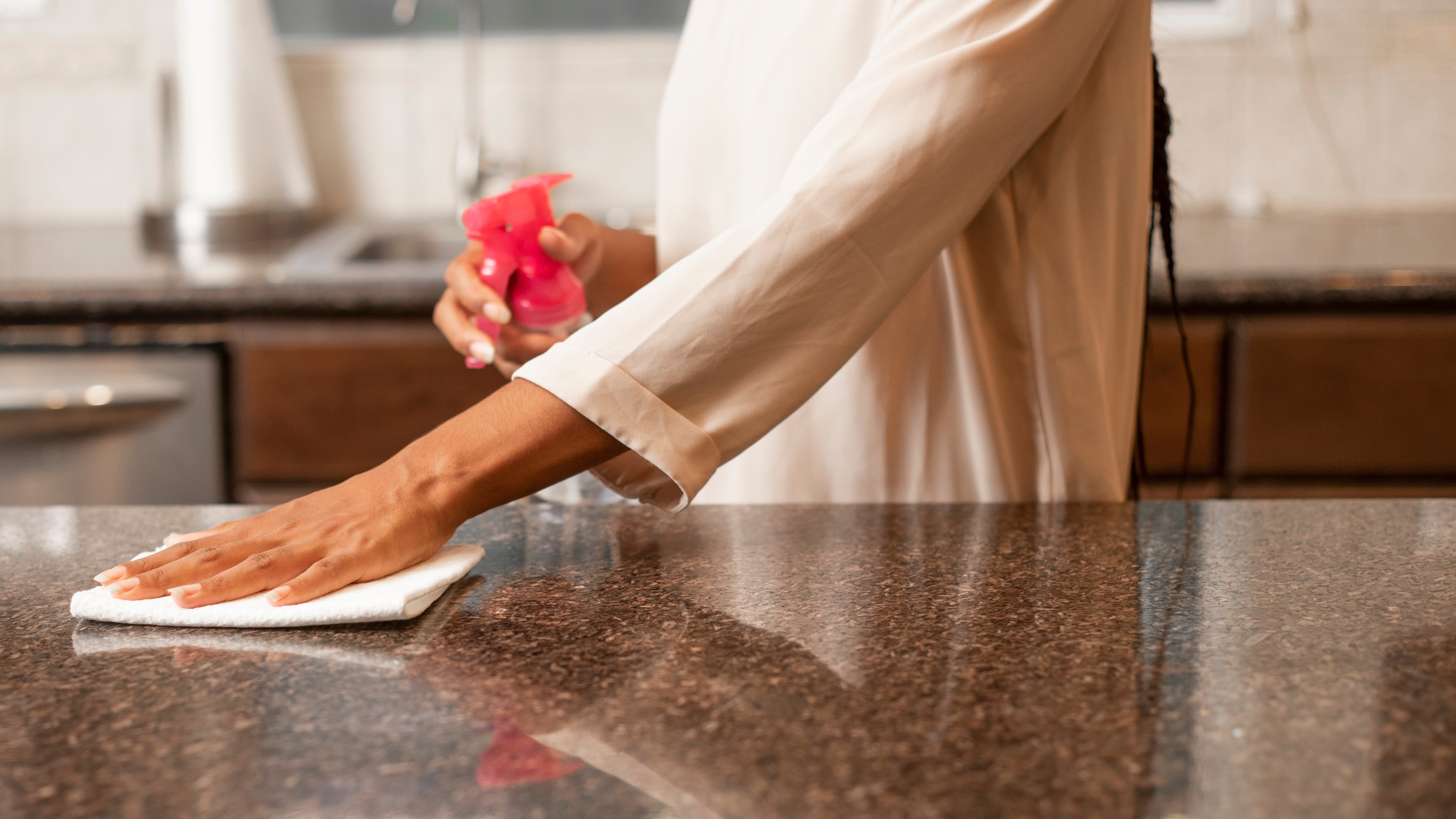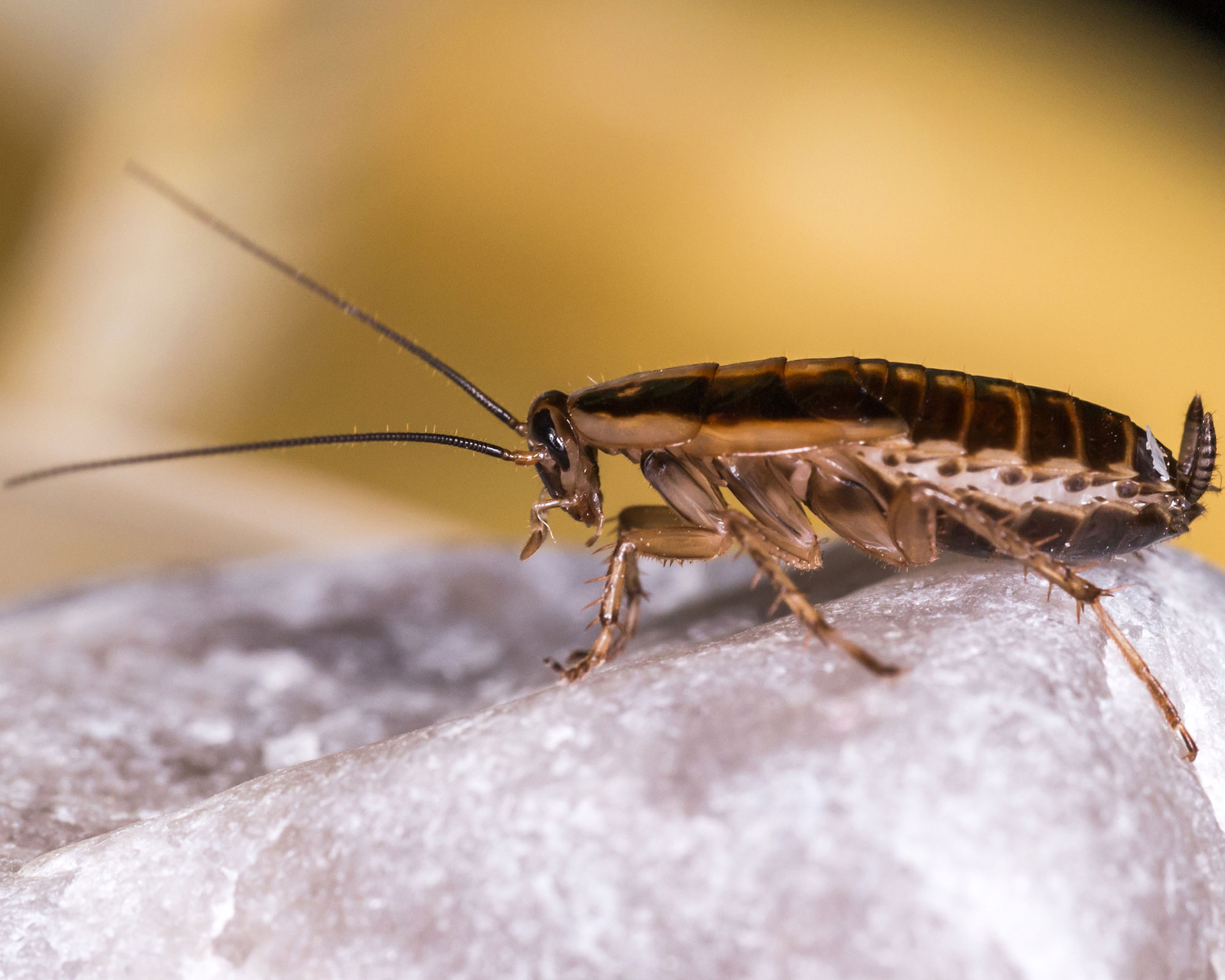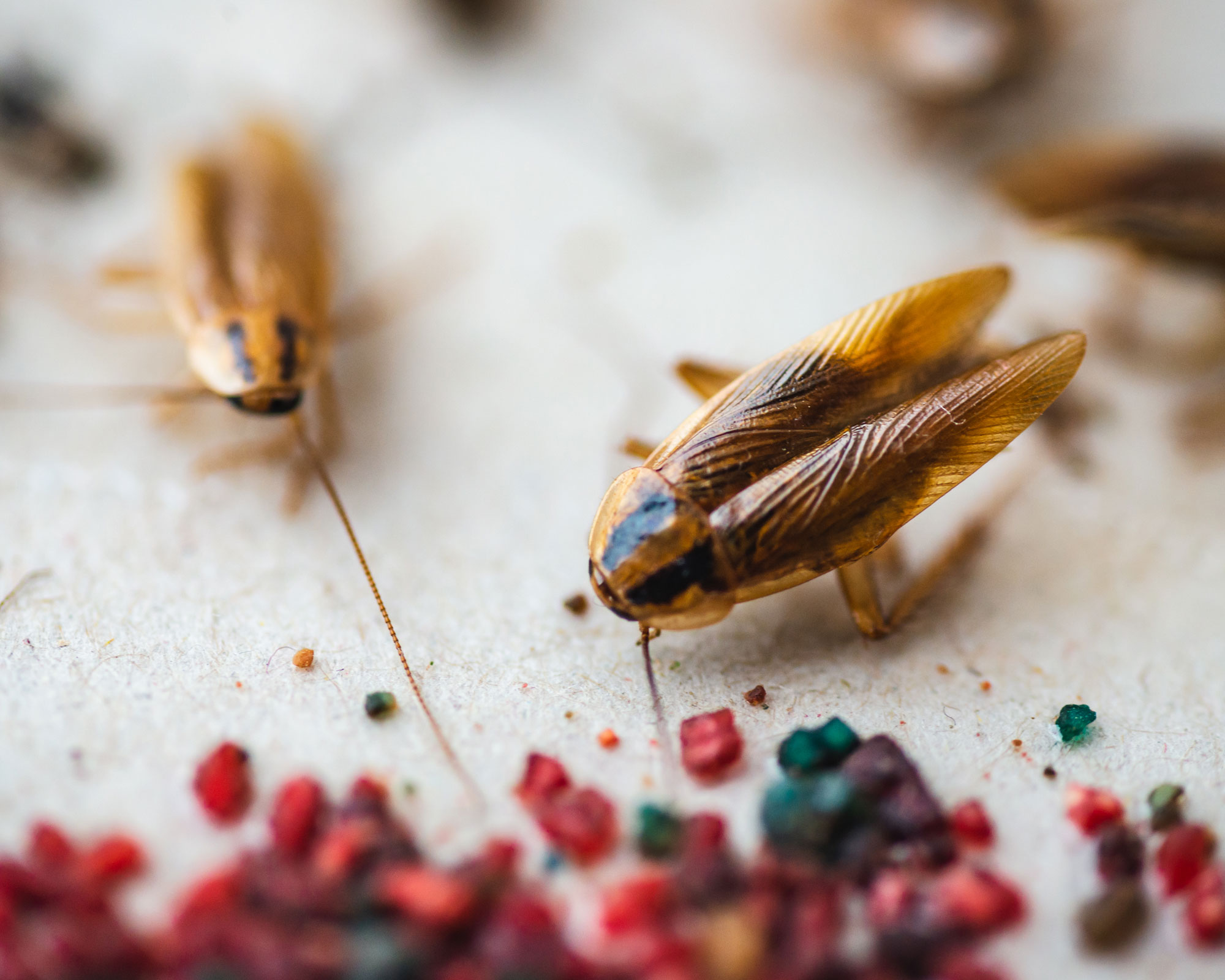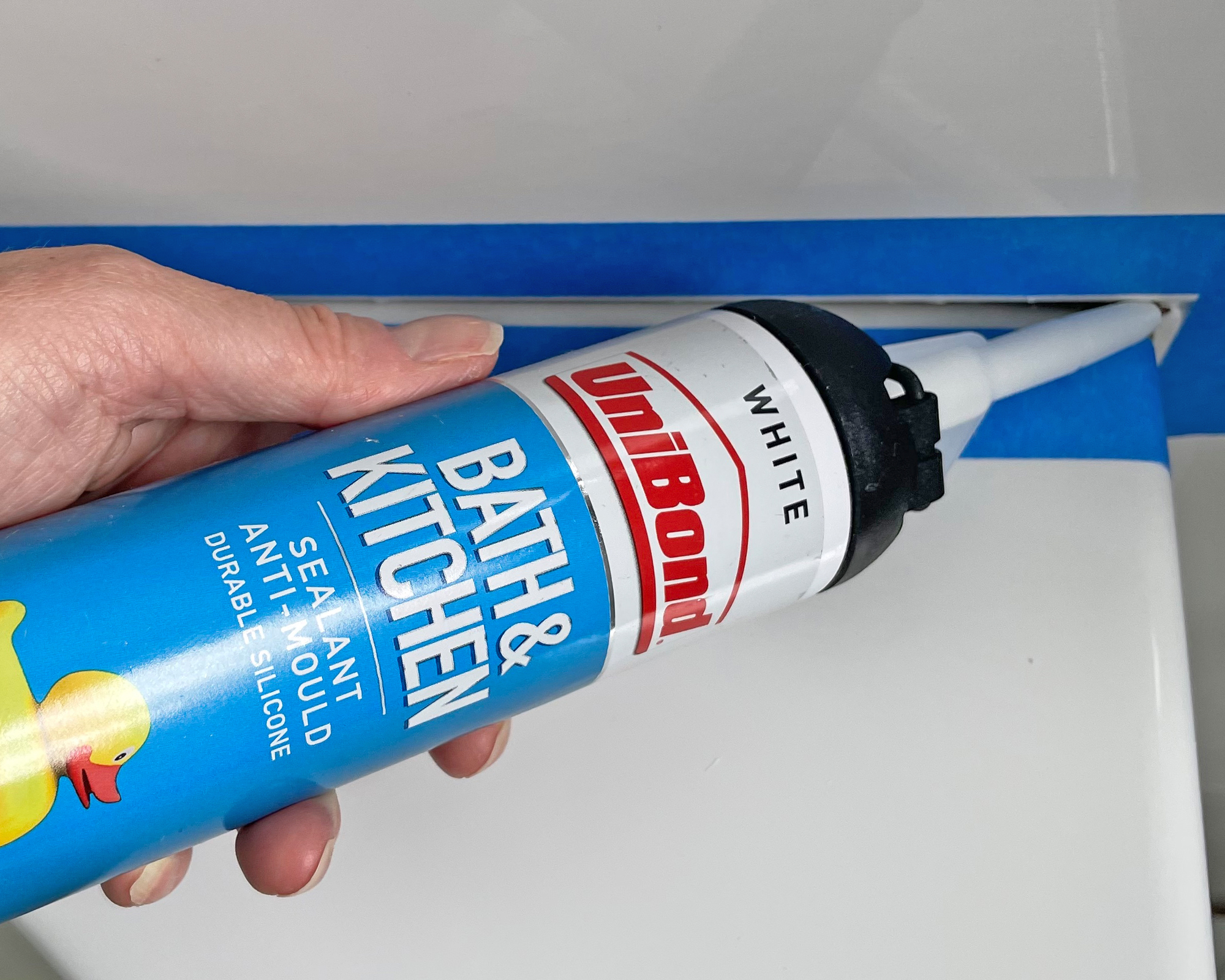How to get rid of cockroaches in the kitchen — swot up on roach behaviour to banish them permanently, say experts
Learn how to get rid of cockroaches in the kitchen from our pest control pros to clear pesky home invaders for good


Finding pests at home can be distressing, so learning how to get rid of cockroaches in the kitchen is a top priority when they've set up shop indoors.
Our experts, including pest pros and professional cleaners, dive into the psychology of roach behavior and why they end up in your kitchen, plus explain how to get rid of them and stop them coming back in six steps you can complete yourself.
And, if all else fails when trying to get rid of cockroaches, our experts reveal the signs you're becoming overwhelmed, and how to know it's time to call a professional pest control company in for help.
How to get rid of cockroaches in the kitchen
The three key pillars to tackling roach infestations in the kitchen, according to cockroach researcher and entomologist Chad Gore at Terminix, are learning how to identify bugs in your home correctly, understanding the biology and behaviour of cockroaches, and knowing how insecticides work so you use them correctly.
"[These are] critical to successfully controlling and eliminating cockroaches," Chad says. "It takes time to eliminate an entrenched infestation, but it can be done."
Our in-depth guide, below, includes six steps you can follow at home, even if you have zero experience of dealing with roaches, or any pest for that matter.
Step 1: Identify the species

A German cockroach
The first step to making a plan of action to eradicate cockroaches from your kitchen starts with figuring out which cockroach species you're dealing with. You don't need to be a scientist or roach expert to figure this one out, luckily!
Get small space home decor ideas, celeb inspiration, DIY tips and more, straight to your inbox!
Chad says, "The German cockroach is the number one cockroach found in kitchens across the United States. Others, like the peri domestic species (for instance, American cockroaches, Turkestan cockroaches, and Oriental cockroaches) may also occasionally find their way inside from their normal exterior habitats.
"However, the German cockroach is public enemy number one among the kitchen-infesting cockroaches because it is a domestic species completely dependent upon man-made environments and resources for their survival."
There are usually several signs you may have an issue with cockroaches (especially German cockroaches) in the kitchen, including seeing the insect in the area.
"Depending on the size of an infestation," Chad explains, "there can be a noticeable odor (usually with large or longstanding infestations). Some species give off very distinct odors and the trained nose can tell the difference between them."
The odor is often described as an oily, pungent, musty, unpleasant stench that is hard to miss, even for the untrained nose.
Chad adds, "You might also find the exuviae (the shed exoskeletons left behind after they molt). Finding the egg cases (ootheca) is another sign of cockroaches. You can also find their droppings."
German cockroach droppings typically look like pepper, while other larger species such as American cockroaches produce droppings that resemble mouse droppings,
with a size and shape similar to chocolate sprinkles (sorry readers, we know it's gross).
Understanding the insect's behaviour helps when working to clean an infestation. Chad explains, "For example, we know that cockroaches prefer to be hidden away in cracks and crevices where they’re in close contact (touching) multiple surfaces so we know placing cockroach bait in those cracks and crevices where they prefer to be is the most efficient and effective way to target them."
Some insecticides such as the aerosols you might buy over the counter, tend to be repellent to cockroaches. "In some cases, we may want to push cockroaches from one place to another, referred to as 'flushing cockroaches'," Chad explains. "In other cases, we may not want to flush cockroaches because it pushes them from one place to another (for example, pushing them from one apartment to another)."
Step 2: Remove food sources

It's no wonder roaches often make themselves at home in the kitchen, as these rooms have the perfect blend of ingredients, so to speak, to help them thrive.
Chad explains, "Kitchens are full of the resources cockroaches need, often with plenty of food, water, and warm hiding places. Just think about the many hidden cracks, crevices, and voids that exist in a kitchen. Any one of them can be a cockroach's favorite new place to live."
To tackle your infestation, ensure sanitation in the kitchen is good. Chad advises cleaning up your kitchen, or eliminating any food crumbs, open foods including pet food or easily accessible trash and water.
"Minimize the amount of free water they can have access to, so clean any spills and fix any leaking pipes or faucets," Chad says.
Professional cleaner Karina Toner of Spekless Cleaning says, "Use a damp cloth or sponge to clean kitchen surfaces thoroughly, as cockroaches are attracted to food residue and spills."
Karina advises emptying and cleaning pet food and water dishes daily to prevent leftovers and mess becoming a food source for cockroaches.
She adds, "For cleaning surfaces, I recommend Lysol All-Purpose Cleaner from Amazon for its effective cleaning and disinfecting properties. By removing food sources, you eliminate the primary attractant for cockroaches and make your kitchen less hospitable to these pests."
Step 3: Seal entry points

Pests are notorious for squeezing themselves into the tiniest of gaps to get into homes, but cockroaches are the original hitchhikers, often catching a ride straight into your home, or scuttling over from a neighbouring infestation.
Chad says, "German cockroaches are completely reliant upon people to be brought inside structures. They're most often brought in on packages, infested items, and personal possessions that come from one infested environment to another.
"For German cockroaches, the best thing to do is to visually inspect items (bags, packages, etc.) for evidence of cockroaches, such as the insects themselves."
In multi-family apartment buildings, it's very common to have German cockroaches move from one apartment to another nearby, or to sneak into adjacent homes.
To avoid this happening to you, seal cracks, gaps, and holes in your kitchen and other potentially infested rooms to reduce places where they can hide should they find their way into your home, Chad advises.
We recommend DAP Kwik Seal Acrylic Kitchen Sealant, available at Target, for the job as it's water and mildew-proof, quick-drying and can be applied to multiple surface types including ceramic, tile and grout.
Karina says, "Follow the manufacturer's instructions carefully when applying insecticide, and use caution to avoid contact with food, pets, and children. Consider using insecticide dust in hard-to-reach areas where cockroaches may hide, such as wall voids and electrical outlets."
She recommends using Ortho Home Defense Insect Killer for its effectiveness against cockroaches and other household pests indoors, adding, "Insecticides target cockroaches directly, killing them on contact or through ingestion, and provide residual protection to prevent future infestations."
That residual protection will help you keep cockroaches away.
Step 4: Vacuum insects

Whilst many of us reserve this appliance for sucking up rogue spiders, your fabulous vacuum cleaner can be a formidable weapon in immediate cockroach control, whilst putting a tolerable distance between you and the insect — especially if, like the Real Homes team, fast-moving roaches give you the serious ick.
Chad says, "Vacuum up as many cockroaches as you can see or find to immediately remove them from the infested environment. Discard your vacuum contents into a bag and goose-tie knot it immediately after to prevent escape."
The Glad Quick-Tie 13 Gallon trash bags on Amazon will make easy work of sealing those suckers inside, with shoppers buying thousands of the 4.5 star rated item monthly.
Karina recommends using a vacuum cleaner with a HEPA filter to effectively remove cockroach allergens and debris from surfaces. Real Homes reviewed and rated the Miele Blizzard 4.5 stars during testing, for its versatility across multiple surfaces and this comes with a HEPA lifetime filter, ideal for asthma and allergy sufferers, or those with furry or otherwise messy pets.
"Implement a regular cleaning schedule to keep your kitchen clean and free of food debris that could attract cockroaches," Karina says. "Consider the Dyson V11 Torque Drive Cordless Vacuum Cleaner (available on Amazon) for its powerful suction and versatility."
Step 5: Use insecticides and bait
There are many insecticides on the market to bait or kill roaches in the kitchen, including sprays (such as Hot Shot Botanical Bug Killer from Lowe's, specially formulated for kitchens, and Advion Cockroach Gel Bait on Amazon highly rated in over 88% of it's 40,000 reviews).
Chad advises strictly using roach insecticides and baits according to the manufacturer's label. "Continue using them until the problem has resolved. Don't be afraid to change the bait to different brands if they don't seem to like the other bait...cockroaches can change their preferences.
"Over the counter cockroach baits can be successful as long as they're used properly and enough of it is used. There is no quick magic bullet. Boric acid dust is also very effective when used properly...but most people don't know how to use it the right way (less is best)."
Boric acid clings to the roach's body and, when it grooms itself or eats other cockroaches (yes, really), it ingests the powder.
"Boric acid and other borate salts in insectides work as a 'stomach' poison, Chad explains. "They’re also thought to have some neurotoxic function as well. Borates have been used as an insecticide for a very long time with no known case of documented resistance to it. That’s huge for pest management! When used properly (according to their label), as a dust or a bait additive, boric acid (and borates in general) are very effective.
Chad explains the right way to use boric acid is to apply a fine dust in cracks, crevices and closed voids where you suspect or expect cockroaches to be.
He says, "Just light “puffs” of the dust is generally sufficient. Unfortunately, the bottles of boric acid you might buy over the counter (the ones with the twist tops) are not always so great for making light applications (it’s sometimes hard to get it out of the bottle without turning it upside down).
"Two things to consider with those over the counter products is to not open the twist top all the way(so you can limit how much comes out and if the top is removable, add two or three metal nuts or some marbles so you can shake it slightly, agitate the dust, and get it airborne inside the bottle. Then when you squeeze it slightly, you might get a better, light dusting.
We recommend the four-pack Boric Acid Insecticidal Dust in Resealable Pail from The Home Depot so you can use a smaller dispenser to pop the dust where you need, in the fashion described above by Chad. The Home Depot items comes highly-rated by customers and is easy to use and store when dealing with a long-term or sizeable infestation.
Step 6: Monitor

Once you've eliminated cockroaches from your kitchen, continue to monitor the issue to ensure they do not come back. If they do, put your bait and insecticides out again to nip the problem in the bud.
Karina adds, "Regular cleaning and monitoring helps prevent cockroach infestations by maintaining a clean and unattractive environment for these pests, reducing the likelihood of their return."
Learn how to clean kitchen countertops, spruce up kitchen cabinets, and how to clean floors like a pro for a kitchen so clean, cockroaches won't set a single scuttley foot in it.
You can also use products already in your kitchen cabinets and home to naturally repel bugs.
FAQs
When is it time to call pest control for kitchen roach infestation?
Chad says, "If your problem is not getting any better, or you're overwhelmed with the severity of the issue then certainly it's time to call a professional."
When you're overwhelmed, you may experience a sensation of panic, feeling 'frozen', stress and difficulty sleeping or focusing.
Meet our experts

Chad Gore, PhD, is an entomologist (a person who studies or is an expert in insects) and market technical director for Terminix, which provides industry-leading essential pest management services to more than 50,000 homes and businesses every day. Terminix is a global leader in pest management, with over 95 years of experience, more than 11,700 teammates and 380 locations around the world, serving over 2.9 million customers. Chad leads and trains teams on pest identification, challenging pest problems. Chad earned his Doctorate of Philosophy, Entomology, from North Carolina State University. While at NCSU, he worked on the physiological and molecular biology of German cockroach allergens, cockroach and allergen mitigation tactics in infested homes, and cockroach control in animal-rearing facilities.
You can also harness cockroach facts to get rid of them. If you find any other pests nearby, our expert guides on how to get rid of ants in the kitchen, and how to get rid of mice will set you quickly on the path to conquering infestations in this vital space.

Hi! I'm editor of Real Homes. I've been a senior journalist and editor for national magazines and newspapers for 16 years, specializing in consumer, real-life, and lifestyle articles. I have a BA in English Language and Communication, mentor journalists, and I’m also founding editor of Lacuna Voices, an independent digital platform. I love to cook, add character to my newly-built home, try my hand at DIY projects, keep my collection of plants alive, and make memories with my little family of three. For Real Homes, I specialize in articles on pest control, DIY, declutterring and cleaning, interviewing experts daily for their top tips and product recommendations.
